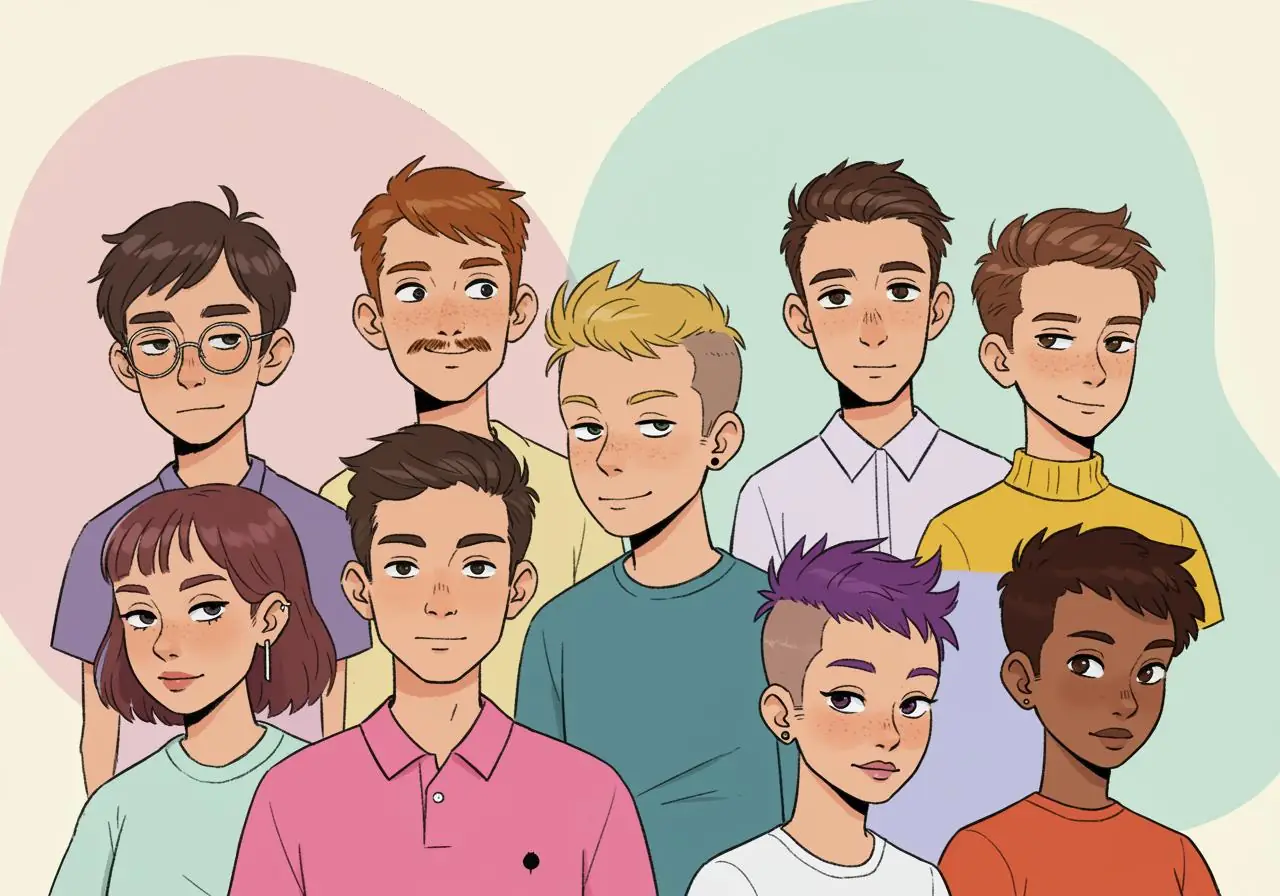The age-old question of what makes someone “look gay” is fascinating, particularly because it challenges our understanding of both sexuality and social perception. While we should be careful not to reinforce harmful stereotypes, it’s worth exploring why humans often make these assumptions and what signals we might be picking up on.
The Fashion Factor: Not What It Used to Be
The traditional markers people once relied on have become increasingly fluid. The well-dressed, fashion-conscious gay man stereotype has been rendered nearly obsolete by the rise of metrosexual culture and the general democratization of fashion. Today, you’re just as likely to find straight men getting manicures and facials as gay men in flannel shirts and work boots.
Body Language Stereotypes: More Than Just a Swagger
Body language often comes up in these discussions. There’s a common belief that gay men move differently – more fluid gestures, different walking patterns, or specific mannerisms. But this oversimplifies the incredible diversity within the gay community. For every gay man who fits this description, there’s another who doesn’t.
The Mystery of ‘Gaydar’: Beyond Physical Cues
The “gaydar” phenomenon might actually be more about subtle social cues than anything physical. Research suggests that gay individuals may develop different patterns of eye contact and social interaction. It’s not necessarily about “looking at men differently,” but rather about the entire package of non-verbal communication that develops from living authentically as oneself.
Read more at What is a ‘Gaydar’: 5 Signals That ‘Gaydars’ Pick Up.
Voice and Speech Stereotypes: Breaking Down the Stereotypes
Voice and speech patterns are another commonly cited indicator, but this too is problematic. While some gay men may speak with certain inflections or cadences, plenty don’t, and many straight men naturally speak in ways that others might associate with gay men.
Reading the Signs: The Complexity of Body Language
Body language plays a significant role in these interactions. The way a person carries themselves, their posture, and the subtle angling of their body towards (or away from) someone can speak volumes about their intentions and orientation. While these cues are not unique to gay men, the combination and context in which they are exhibited can contribute to the perception of someone being gay.
Beyond Stereotypes: Gender Norms and Self-Expression
Perhaps what we’re really detecting isn’t “gayness” at all, but rather comfort with defying traditional gender norms. Many gay men, having already broken one major societal expectation by being out, may feel more freedom to express themselves in ways that don’t conform to traditional masculinity.

Pop Culture and Perception: The Kurt Hummel Effect
The truth is, trying to identify someone’s sexuality based on appearance or mannerisms is ultimately a futile exercise. As evidenced by the likes of David Beckham and Harry Styles, straight men can also rock a stylish ensemble with ease. Moreover, placing a gay man in traditionally “straight” attire, as seen in the iconic image of Kurt Hummel from Glee donning a football outfit, doesn’t necessarily conceal his perceived gayness. So, what exactly is at play here?
The Bigger Picture: Why Do We Try to Label?
It’s essential to acknowledge that these observations are not only subjective but also influenced by personal experiences, cultural background, and individual biases. What one person might interpret as a “gay tell” might be entirely lost on another. Moreover, the danger of relying on these stereotypes is that they can lead to misidentification, misunderstanding, and, in some cases, discrimination.
Sexuality is internal, personal, and complex. While some people might fit certain patterns or stereotypes, many others break them entirely. The more important question might be why we feel the need to make these determinations in the first place.
Final Thoughts: Does It Really Matter?
What’s most valuable is creating a society where these surface-level judgments become less important, where people can express themselves authentically without fear of being labeled or categorized. After all, the beauty of the LGBTQ+ community lies in its diversity and its rejection of rigid social constraints.
The next time you find yourself making assumptions about someone’s sexuality based on their appearance or behaviour, it might be worth examining those assumptions. Are they based on genuine observation, or are they influenced by societal stereotypes? And ultimately, does it really matter?
What are your thoughts?
Do you believe there are certain qualities that make someone appear gay, or is it all just a product of our imagination and societal conditioning? Share your insights in the comments below.








Share your thoughts on the above post!